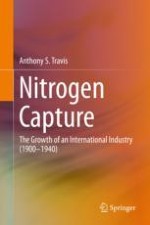2018 | OriginalPaper | Buchkapitel
15. Imperial Japan: From Cyanamide to Synthetic Ammonia
verfasst von : Anthony S. Travis
Erschienen in: Nitrogen Capture
Aktivieren Sie unsere intelligente Suche, um passende Fachinhalte oder Patente zu finden.
Wählen Sie Textabschnitte aus um mit Künstlicher Intelligenz passenden Patente zu finden. powered by
Markieren Sie Textabschnitte, um KI-gestützt weitere passende Inhalte zu finden. powered by
